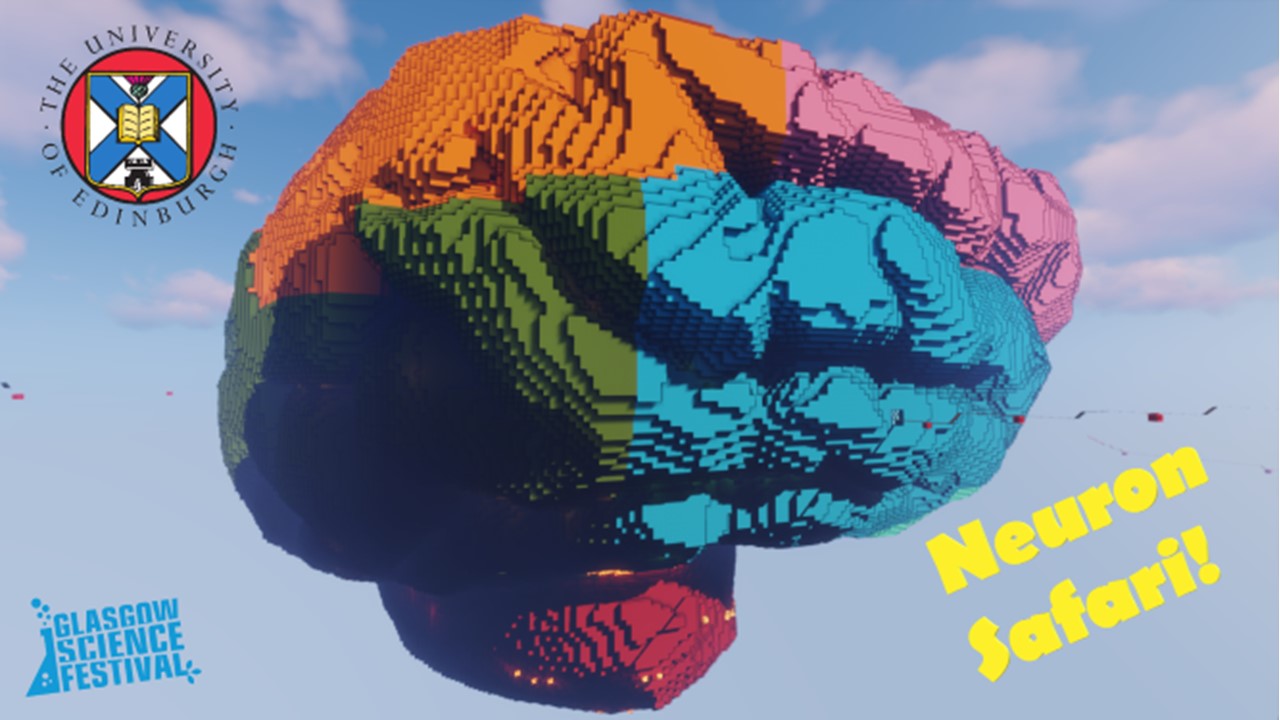Neuron Safari
Published: 9 September 2020
Explore your brain in Minecraft! University of Edinburgh.
Ever wondered about how your brain works? What is it made of? What does it look like? Neuron Safari is an introduction to the wonderful bizarre world of your brain, all built in Minecraft!
Neuron Safari is a novel and (hopefully!) fun way of engaging with Neuroscience using Minecraft. We have constructed a unique world that encompasses an introductory look into basic neuroscience and cellular concepts, using real data! You can explore six different "zones", each with its own specific focus. From the University of Edinburgh.
This version of the Safari has been constructed to be accessible from ages 7+. Some aspects are more difficult to grasp than others, but by including it all in one world we hope that whatever your age, you learn something new from your time in the Safari! We are sad that we cannot be there in person to show you around, but we hope you'll still get lots of enjoyment out of it.
Neuron Safari is free to download and play if you have a copy of Minecraft. Instructions for how to install on computers, phones and tablets are available at our website
Follow this link to the Neuron Safari website for this activity
If you want even more science insights, on the Neuron Safari website, you can also take a guided tour with Richard – the Safari creator – who gives a little lesson on DNA and proteins that are super important for all your cells, not just your brain!
Neuron Safari was created by Richard Fitzpatrick, PhD student at the Stefan Lab, Centre for Discovery Brain Sciences at The University of Edinburgh.
Any questions? You can speak to the Neuron Safari team on twitter or Facebook @NeuronSafari or email neuronsafari@gmail.com
Some more resources from other websites:
A really fun way of seeing just how small some of the things we’ve shown you in this safari are!
Some free books filled with cool Neuroscience information here
A game where you can really help scientists by folding proteins.
First published: 9 September 2020


